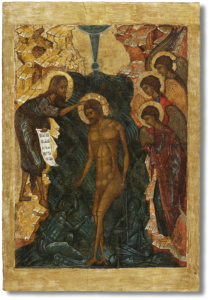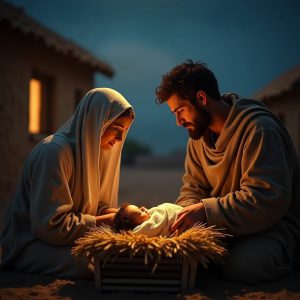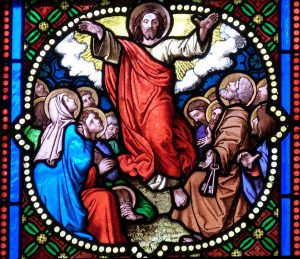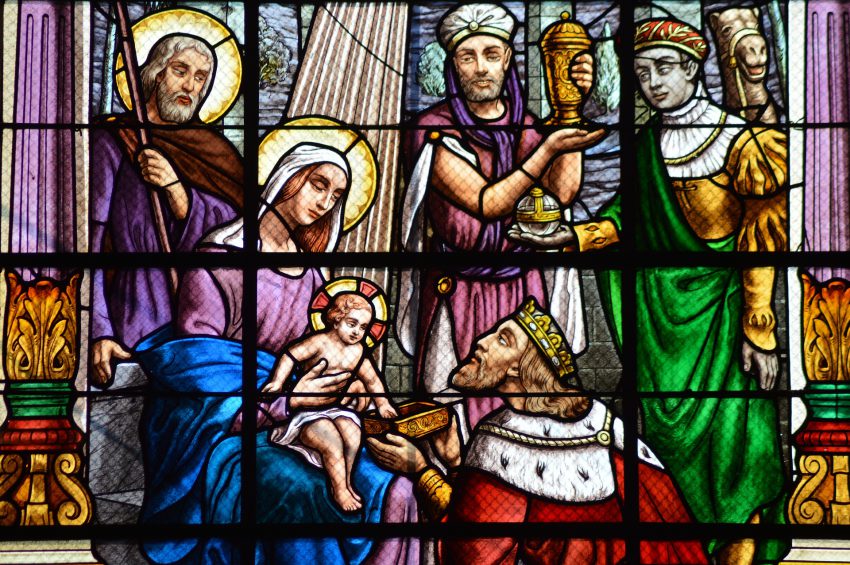Epiphany does not much rate. A few liturgical experts may care about it, but for most North American Christians the real action is Christmas, which seems to begin with Advent (if not earlier, right after Halloween or Thanksgiving) and to end soon after the gifts are unwrapped and a wonderful dinner is enjoyed on Christmas Day. But Christians have reason to pay more attention to Epiphany. The Christmas story reaches its climax not on Christmas Eve or Day but rather on Epiphany.
The first Christians had one central focus to the church year: Easter, the commemoration of Christ’s resurrection. For them, the light of Easter illuminated every Sunday, which they called the Lord’s Day, the eighth day of creation (that is, the day of a new creation after the first seven days of creation). Gradually, a cycle of services developed to prepare believers for Easter (Lent, Holy Week) and to propel their ministry in the wake of Easter and Christ’s ascension (Pentecost).
Theophany and Christ’s Baptism
At the same time, a second central focus to the church year emerged: Theophany, the commemoration of Christ’s self-manifestation to the world. Theophany was especially associated with the baptism of Christ, the moment in which Christ’s humanity became most fully transparent to his divinity.

As the Gospel of Luke (3:21) reports: “Now when all the people were baptized, and when Jesus also had been baptized and was praying, the heaven was opened, and the Holy Spirit descended upon him in bodily form as a dove, and a voice came from heaven, ‘Thou art my beloved Son, with thee I am well pleased.’”
The Church Fathers saw in this event God’s self-revelation to the world as three-in-one and one-in-three: one God, Father, Son, and Holy Spirit. As a sacrificial act of solidarity with sinful humankind, Christ is the Son, obedient to the Father’s will. As Jesus emerges from the waters, the Father speaks from heaven, declaring that Jesus is indeed his beloved Son. At the same time, the Holy Spirit descends in the form of a dove, uniting the Son to the Father and sending him into his ministry to a broken, ailing world.
Ancient icons dramatically depict this moment. On one side of the Jordan stands John the Baptist bending over Christ as he comes out of the waters. On the other side, attending angels gather. Within the waters are sea creatures, such as the rebellious Leviathan whom Christ as the world’s (and waters’) Lord and Savior conquers, returning him to his playful character at the beginning of creation.
Theophany, Christ’s self-manifestation to the world, is therefore nothing less than God’s revelation of his triune character in heaven and of his coming kingdom of justice and peace on earth. As with Easter, a cycle of services developed to more fully draw believers into this wondrous mystery.
Seasonal Observances of God’s Saving Work

Especially in the Christian West, Christmas gradually replaced Theophany as the central moment in this cycle. A period of preparation preceded Christmas (Advent), and Christmas itself extended over 12 days to Epiphany, which the church now associated with the magi and their adoration of Christ at the manger. The commemoration of the Baptism of Our Lord was moved to the following Sunday.
The two liturgical cycles have clear parallels. Advent and Lent are seasons of preparation marked by renewed commitment to prayer, fasting, and almsgiving. Christmas and Easter commemorate most fully God’s saving work on earth (incarnation, crucifixion, and resurrection). Each “day” extends over a period of time (12 days of Christmas, 50 days of Easter, with Ascension Day coming 40 days after Easter), and both are seasons that call forth our wonder and joy. Epiphany and Pentecost mark the end of each cycle by sending the church into ministry: we, like the magi, return home with Good News for the Gentiles, and we, like the apostles, receive the Holy Spirit to go into the world to make disciples of all nations.
“Let There Be Light”: Epiphany as the Culmination of God’s Self-Revelation as Emmanuel
 Christ manifests himself to the world already at Christmas, but the light of Christmas grows stronger over the next 12 days. Epiphany represents God’s fullest confirmation of God’s self-revelation to the world as Emmanuel, God with us. Christians celebrate Christmas Eve by lighting candles in a darkened church, but on Epiphany, even the light of the blazing sun, we could say, is too dim to represent Christ, the One who one day manifests himself as sheer light on the Mount of Transfiguration.
Christ manifests himself to the world already at Christmas, but the light of Christmas grows stronger over the next 12 days. Epiphany represents God’s fullest confirmation of God’s self-revelation to the world as Emmanuel, God with us. Christians celebrate Christmas Eve by lighting candles in a darkened church, but on Epiphany, even the light of the blazing sun, we could say, is too dim to represent Christ, the One who one day manifests himself as sheer light on the Mount of Transfiguration.
On the first day of creation, God said, “Let there be light.” And there was light. Now, the 12 days of Christmas lead us to another epiphany. The light that was from the beginning is Jesus Christ, the light of the world.
 The Rev. Dr. John P. Burgess is James Henry Snowden Professor of Systematic Theology at Pittsburgh Theological Seminary and has taught at PTS for more than 25 years. Previously, he was professor and chaplain at Doane College and associate for theology in the Office of Theology and Worship, Presbyterian Church (U.S.A.). An ordained Presbyterian minister, he has served several congregations part time. Dr. Burgess has also served his denomination as a member of the Presbyteries’ Cooperative Committee on Examinations and the Re-forming Ministry Initiative (Office of Theology and Worship) and as a faculty mentor for the Company of New Pastors. He was awarded his B.A. from Colorado College, his M.Div. from McCormick Theological Seminary, and his Ph.D. in Christian theology from the University of Chicago. Dr. Burgess was a Fulbright Scholar to Russia in 2011 and again in 2018-2019, a Luce Fellow in Theology for 2011-2012, and a research fellow at the Center of Theological Inquiry in 2014-2015. These awards have supported his current research on the Russian Orthodox Church in post-communist Russia. Dr. Burgess is the author of numerous books, including, A Pastoral Rule for Today: Reviving an Ancient Tradition (IVP Academic, 2019), Confessing Our Faith: The Book of Confessions for Church Leaders (Westminster John Knox Press, 2018), and Encounters with Orthodoxy: How Protestant Churches Can Reform Themselves Again (Westminster John Knox Press, 2013). Dr. Burgess is married and has three grown daughters, who are also his theological teachers.
The Rev. Dr. John P. Burgess is James Henry Snowden Professor of Systematic Theology at Pittsburgh Theological Seminary and has taught at PTS for more than 25 years. Previously, he was professor and chaplain at Doane College and associate for theology in the Office of Theology and Worship, Presbyterian Church (U.S.A.). An ordained Presbyterian minister, he has served several congregations part time. Dr. Burgess has also served his denomination as a member of the Presbyteries’ Cooperative Committee on Examinations and the Re-forming Ministry Initiative (Office of Theology and Worship) and as a faculty mentor for the Company of New Pastors. He was awarded his B.A. from Colorado College, his M.Div. from McCormick Theological Seminary, and his Ph.D. in Christian theology from the University of Chicago. Dr. Burgess was a Fulbright Scholar to Russia in 2011 and again in 2018-2019, a Luce Fellow in Theology for 2011-2012, and a research fellow at the Center of Theological Inquiry in 2014-2015. These awards have supported his current research on the Russian Orthodox Church in post-communist Russia. Dr. Burgess is the author of numerous books, including, A Pastoral Rule for Today: Reviving an Ancient Tradition (IVP Academic, 2019), Confessing Our Faith: The Book of Confessions for Church Leaders (Westminster John Knox Press, 2018), and Encounters with Orthodoxy: How Protestant Churches Can Reform Themselves Again (Westminster John Knox Press, 2013). Dr. Burgess is married and has three grown daughters, who are also his theological teachers.
Read Next



